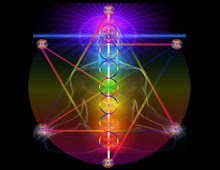Tuesday, December 16, 2008
Jose Arguelles
By 2012, according to the Law of Time, we must be ready for the shift, the unparalleled transition into the next stage of our evolution, the noosphere. This signifies the attainment of a unified field of planetary consciousness.
Evolution of consciousness: What is driving the evolution of consciousness described by the Mayan Calendar?
How is the Mayan Long Count to be explained? Why did these ancient people, the most mathematically advanced of their day, choose to use a chronology that consisted of thirteen different periods of 144,000 days each, starting on August 11, 3114, BC and ending on December 21, AD 2012? On a more fundamental level three different types of answers have been given to this question, a materialist, a spiritual and what might be called a pseudo-spiritual, answers that are linked to different world views. In the materialist world view the astronomical, physical cycles are seen as primary to the spiritual whereas in the spiritual world view they are seen as secondary.
Jose Argelles took a major step in his book The Mayan Factor where he outlined several crucial ideas for the future understanding of the Mayan calendar. He emphasized the Mayan cycles of 260 and 360 days and the fact that these lacked physical correspondents. He also suggested that human history was the result of a galactic beam of thirteen baktuns that created the seasons of human history and made an initial description of how this manifested. In this, Argelles took major steps away from the astrological perspective towards a spiritual explanation where the archetypal influences of the tzolkin symbols were seen as playing a primary role. Argelles was the first in modern time to systematically work on the deeper meaning of the Mayan calendar and presented an alternative interpretation to that of the academic by suggesting that the Great Cycle caused the spiritual evolution of humanity. This line of thinking may be called the spiritual interpretation of the Mayan calendar.







